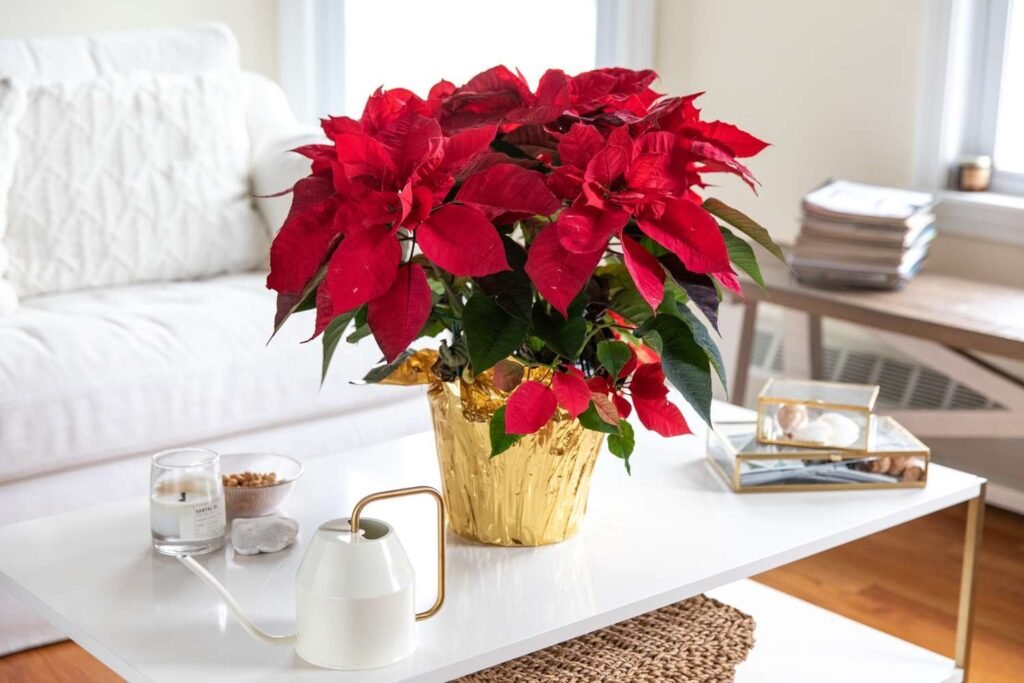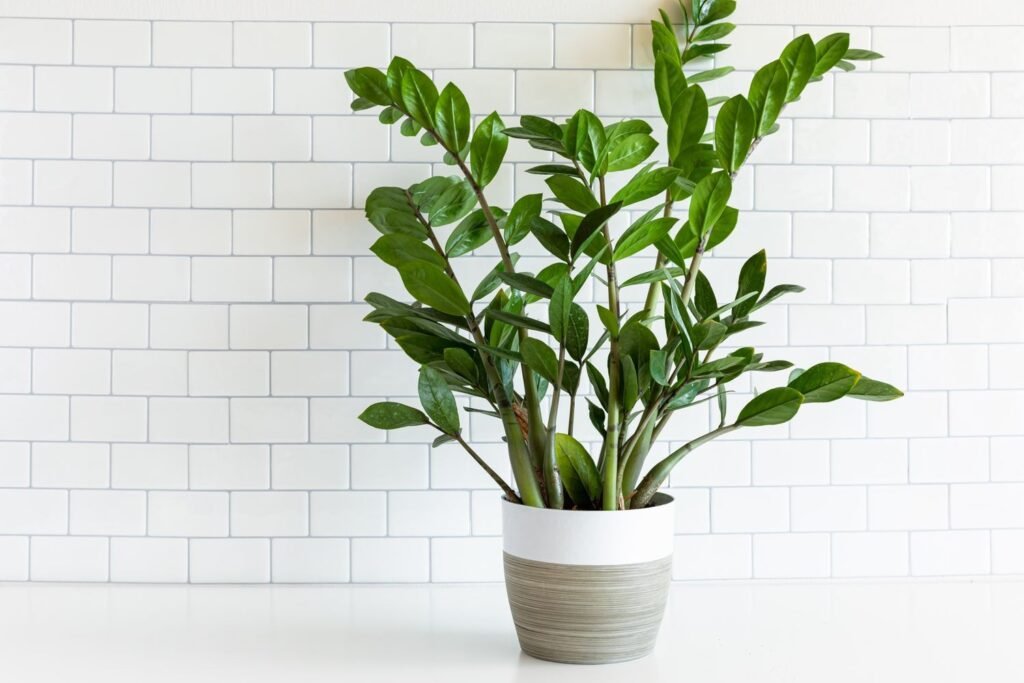Houseplants can be a great addition to any home, providing a touch of greenery and life to any living space. While they can be beautiful and beneficial to us humans, many poisonous houseplants for cats are toxic. It is important to be aware of which plants can be dangerous to cats so that you can keep your furry friends safe.
First of all, it is important to note that cats are very curious creatures, Moreover, they are quite likely to explore your houseplants. Some cats may even enjoy chewing on leaves or stems, so it is important to always be aware of which plants can be dangerous.
The most common poisonous houseplants for cats are lilies, which can be fatal if ingested. All parts of the lily plant are toxic, but the most dangerous parts are the leaves, stems, and petals. Other plants to be aware of are dieffenbachia, philodendron, aloe Vera, and oleander. If ingested, these plants can irritate the mouth, drooling, and even vomiting. Other plants to avoid if you have a pet cat include the castor bean plant, which can cause severe liver. Let’s explore a list of hazardous houseplants that are toxic for your fur babies.
Peace Lily

Peace lilies (Spathiphyllum) are popular houseplants because of their attractive white flowers and lush foliage. The peace lily is an attractive houseplant, but it’s toxic to pets. All parts of the peace lily are poisonous and can cause severe reactions in cats and dogs if ingested. Symptoms can include drooling, vomiting, difficulty breathing, and irritation of the mouth and throat. In severe cases, organ failure may occur. If you suspect that your pet has eaten any part of the peace lily, contact your veterinarian immediately.
They are easy to care for and thrive in low light and humidity, making them great for offices and homes. Peace lilies need plenty of water and should be watered thoroughly when the soil feels dry to the touch. They should also be fertilized regularly during the growing season for the best results.
English Ivy is one of the Poisonous Houseplants for cats

English ivy (Hedera helix) is a popular evergreen vine that is commonly grown as an indoor and outdoor ornamental plant. Unfortunately, it can be toxic to pets if ingested. The leaves, berries, and stems of this plant contain saponins, which can cause mild stomach upset, drooling, vomiting, and difficulty breathing. If your pet shows any of these signs after ingesting English ivy, seek veterinary care immediately. It is best to keep English ivy out of the reach of pets to prevent any potential issues. English ivy is an excellent choice for those seeking a low-maintenance plant, as it requires little care once established.
Aloe Vera

Aloe Vera is generally considered safe for pets, but it is important to keep it away from cats and dogs. The leaves contain saponins and anthraquinones, which can be toxic if ingested. If consumed, this can lead to vomiting, diarrhea, and other digestive problems. Aloe Vera also has a bitter taste, so pets are unlikely to eat it. Therefore, it is best to keep Aloe Vera plants out of reach of pets, to be on the safe side. The gel from its leaves has traditionally been used topically to treat skin conditions such as burns, eczema, psoriasis, and acne. It is also used internally to aid digestion and reduce inflammation. Aloe Vera is also high in antioxidants, which help to protect the body from damage caused by free radicals.
Sago palm is one of the Poisonous Houseplants for cats

The sago palm is a popular houseplant, but it can be toxic to pets. The plant contains several compounds toxic to animals, especially dogs and cats. Ingesting even a small amount of the plant can cause digestive and neurological symptoms, including vomiting, seizures, and even death. If you have pets and you are considering keeping a sago palm as a houseplant, it is best to keep it out of their reach. It has a short, stout trunk and a crown of large, feather-like leaves. The edible part of the plant is the starch-filled pith inside the trunk, which is processed to make sago flour. The sago palm is an important food source for many indigenous peoples in the region and is used for a variety of other purposes, such as weaving and construction.
Dumb Cane

Dumb cane (Dieffenbachia spp.) is a popular houseplant due to its large, showy foliage. However, it is important to note that it is also a toxic plant. All parts of the plant contain oxalate crystals, which can cause unpleasant symptoms if ingested. Symptoms include burning and swelling of the mouth, tongue, and throat, along with nausea, vomiting, and diarrhea. If ingested, contact your local poison control center immediately.
Bird of Paradise is one of the Poisonous Houseplants for cats

The Bird of Paradise is a beautiful and exotic houseplant, but it is also toxic if ingested by people and animals. The leaves, flowers, and roots contain calcium oxalate crystals, which can cause skin irritation, burning, and swelling of the tongue and lips upon contact. Ingestion can cause severe stomach pain and vomiting. If you have pets or small children, you should keep this plant out of reach. Although it is an attractive houseplant, it is not recommended as a safe option for households with young children or pets.
Poinsettias

Poinsettias, while beautiful and festive, is considered toxic houseplants. All parts of the poinsettia plant contain a milky white sap that can irritate skin and eyes. Moreover, they can cause nausea, vomiting, and diarrhea if ingested. In addition, the leaves contain a toxin called euphorbia, which can cause vomiting and a burning sensation in the mouth. As a result, if you have small children or pets in your home, you should keep the poinsettia plant out of reach or avoid it altogether.
Oleander is one of the Poisonous Houseplants for cats

Oleander is a potentially toxic houseplant, as it contains compounds that can cause nausea, vomiting, and other symptoms if ingested. It is also toxic if its sap or smoke is inhaled. For these reasons, it is important to keep oleander away from pets and children and to wear gloves when pruning or handling the plant.
Corn plant

Corn plants, also known as Dracaena fragrans, are common houseplants that can pose a toxic risk. The plant’s leaves and stems contain a substance called saponins, which is toxic to humans and animals if ingested. Symptoms of saponins poisoning can include nausea, vomiting, abdominal pain, and diarrhea. If you suspect your pet or a family member has ingested a corn plant, seek medical attention right away. Take care to ensure that children and pets don’t come into contact with the plant, and keep it away from areas where they can reach it.
Elephant Ear is one of the Poisonous Houseplants for cats

Elephant ear (Colocasia esculenta) is considered to be toxic if your pet eats them. All parts of the plant contain calcium oxalate crystals which irritate the mouth and throat. Symptoms of ingestion include burning, swelling, and difficulty swallowing. If you have this plant in your home, be sure to keep it out of reach of children and pets.
Flamingo Flower

The Flamingo flower (Anthurium andraeanum) is a beautiful houseplant with bright and colorful flowers, but unfortunately, it is toxic to humans and animals. The plant contains calcium oxalate, which can cause burning, swelling, and irritation of the mouth, throat, and stomach. If ingested, seek medical attention immediately. Additionally, the sap of the plant can cause skin irritation and dermatitis. It is important to keep the plant away from pets and children and to wear gloves when handling it.
Amaryllis is one of the Poisonous Houseplants for cats

.Amaryllis is a beautiful houseplant, but it can be toxic if ingested. All parts of the plant contain toxins, including bulbs, leaves, stems, and flowers. Ingestion can cause nausea, vomiting, diarrhea, abdominal pain, and even death in some cases. As such, it is important to keep amaryllis away from children and pets and to use caution when handling it. If you experience any symptoms after handling amaryllis, seek medical attention right away.
ZZ plant

The ZZ plant (Zamioculcas zamiifolia) is a tropical houseplant that is generally considered safe for people and pets, as it does not contain any known toxins. However, the plant has been known to cause skin irritation and eye irritation when handled, so it is best to wear gloves and protective eyewear when handling the plant. Additionally, it is important to keep the plant away from children and pets, as ingesting.
Desert rose (Adenium obesum) is generally not considered to be a toxic houseplant, although it can produce a milky sap that may be irritating to the skin and eyes. If ingested, the sap can cause stomach upset and other digestive issues. As with any plant, it is important to keep it out of reach of children and pets. If the sap of a desert rose comes into contact with your skin, it is best to rinse it off with water.


